General Dynamics Itronix IX-GOBI2 IX-GOBI2 User Manual Gobi2000 User Guide
General Dynamics Itronix Corporation IX-GOBI2 Gobi2000 User Guide
Contents
User Manual
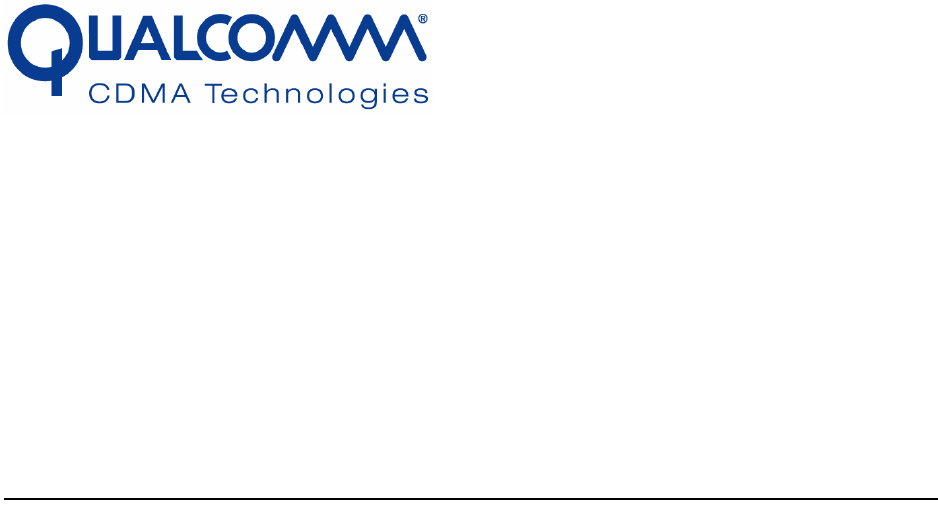
QUALCOMM is a registered trademark of QUALCOMM Incorporated in the United States and may be registered in
other countries. Other product and brand names may be trademarks or registered trademarks of their respective
owners. CDMA2000 is a registered certification mark of the Telecommunications Industry Association, used under
license. ARM is a registered trademark of ARM Limited. QDSP is a registered trademark of QUALCOMM
Incorporated in the United States and other countries.
This technical data may be subject to U.S. and international export, re-export, or transfer (“export”) laws. Diversion
contrary to U.S. and international law is strictly prohibited.
QUALCOMM Incorporated
5775 Morehouse Drive
San Diego, CA 92121-1714
U.S.A.
Gobi2000
User Guide
80-VK890-3 Rev. A
December 22, 2008
Copyright © 2008 QUALCOMM Incorporated.
All rights reserved.

Terms and Conditions of Usage
This document may refer to or describe parts whose manufacture, use, sale, offer for sale, or
importation into the United States are limited or prohibited by one or more U.S. Federal Court
injunctions against QUALCOMM Incorporated. This document is not to be construed as an offer
to sell such parts for use or importation into the U.S., nor should it be construed as assistance in
making, using, selling, offering to sell, or the importation of any product in the U.S. containing
such parts. This document is intended solely to provide information for those products that are
outside the scope of the injunction. Recipient’s download and/or use of the information in this
document constitutes agreement with these terms.
80-VK890-3 Rev. A 2
MAY CONTAIN U.S. AND INTERNATIONAL EXPORT CONTROLLED INFORMATION

80-VK890-3 Rev. A 3
MAY CONTAIN U.S. AND INTERNATIONAL EXPORT CONTROLLED INFORMATION
Contents
1 Introduction . . . . . . . . . . . . . . . . . . . . . . . . . . . . . . . . . . . . . . . . . . . . . . . . . . . . . . . . . . . . . . . 6
1.1 Documentation overview . . . . . . . . . . . . . . . . . . . . . . . . . . . . . . . . . . . . . . . . . . . . . . . . . . . 6
1.2 Application description . . . . . . . . . . . . . . . . . . . . . . . . . . . . . . . . . . . . . . . . . . . . . . . . . . . . 6
1.3 Gobi2000 operating modes . . . . . . . . . . . . . . . . . . . . . . . . . . . . . . . . . . . . . . . . . . . . . . . . . 7
1.4 Terms and acronyms . . . . . . . . . . . . . . . . . . . . . . . . . . . . . . . . . . . . . . . . . . . . . . . . . . . . . . 8
2 Standards and Regulatory Compliance . . . . . . . . . . . . . . . . . . . . . . . . . . . . . . . . . . . 10
2.1 Standards and certification . . . . . . . . . . . . . . . . . . . . . . . . . . . . . . . . . . . . . . . . . . . . . . . . . 10
2.2 Regulatory information . . . . . . . . . . . . . . . . . . . . . . . . . . . . . . . . . . . . . . . . . . . . . . . . . . . 11
2.2.1 Safety warnings . . . . . . . . . . . . . . . . . . . . . . . . . . . . . . . . . . . . . . . . . . . . . . . . . 11
2.2.2 North American compliance . . . . . . . . . . . . . . . . . . . . . . . . . . . . . . . . . . . . . . . 11

80-VK890-3 Rev. A 4
MAY CONTAIN U.S. AND INTERNATIONAL EXPORT CONTROLLED INFORMATION
Gobi2000 User Guide Contents
Tables
Table 1-1 Reference documents . . . . . . . . . . . . . . . . . . . . . . . . . . . . . . . . . . . . . . . . . . . . . . . . . . . 6
Table 1-2 Gobi2000 supported frequency range . . . . . . . . . . . . . . . . . . . . . . . . . . . . . . . . . . . . . . 7
Table 1-3 Gobi2000 operating modes and throughput rates . . . . . . . . . . . . . . . . . . . . . . . . . . . . . 7
Table 1-4 Terms and acronyms . . . . . . . . . . . . . . . . . . . . . . . . . . . . . . . . . . . . . . . . . . . . . . . . . . . 8

80-VK890-3 Rev. A 5
MAY CONTAIN U.S. AND INTERNATIONAL EXPORT CONTROLLED INFORMATION
Gobi2000 User Guide
Revision history
Revision Date Description
A December 2008 Initial release
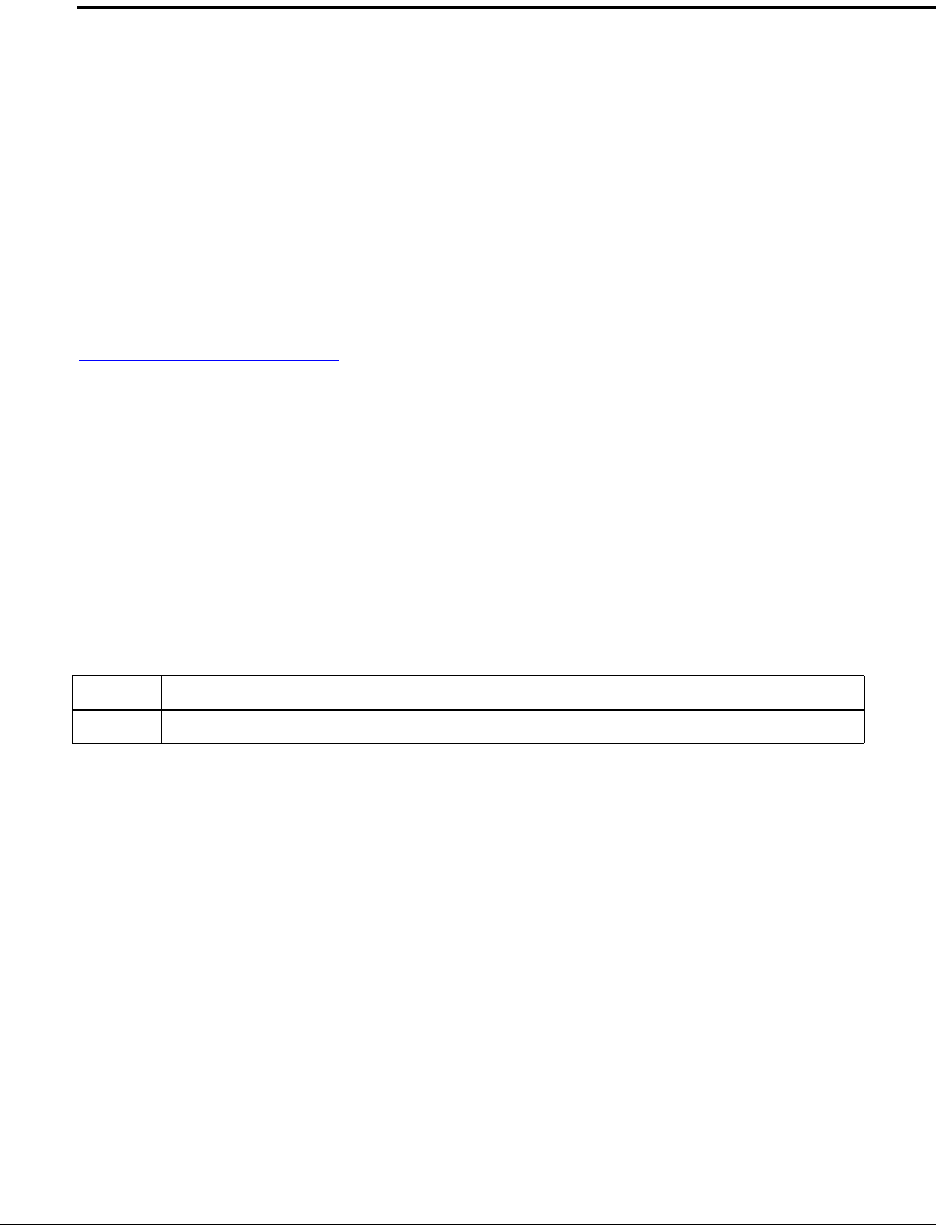
80-VK890-3 Rev. A 6
MAY CONTAIN U.S. AND INTERNATIONAL EXPORT CONTROLLED INFORMATION
1Introduction
1.1 Documentation overview
The Gobi2000™ is the second-generation PCI Express™ Mini Card that enables notebook
computer wireless data connectivity. This datacard solution delivers WWAN connectivity for the
CDMA2000® 1X, 1x EV-DO, UMTS (HSDPA and HSUPA), and GSM/GPRS/EDGE protocols,
plus GPS position location, in a single package. The complete Gobi2000 solution includes all
hardware and software necessary for embedded wireless connectivity in notebook PCs.
All released Gobi2000 documents are posted at the CDMA Tech Support website
(https://support.cdmatech.com) and are available for download.
This Gobi2000 user guide is organized as follows:
Chapter 1 Provides an overview of Gobi2000, provides the list of supported frequencies,
operating modes, and defines terms and acronyms used throughout this
document.
Chapter 2 Provides standards compliance and regulatory information.
Table 1-1 lists documents referred to throughout the Gobi2000 document set; consult these
documents for additional information.
1.2 Application description
The Gobi2000 platform includes a universal embedded data-connectivity modem in the form of a
PCI Express Mini Card, plus the associated software suite for notebook PC applications. Table 1-2
lists Gobi2000 frequency range:
Table 1-1 Reference documents
Ref No. Document
[4] FCC Regulations - CFR 47, Part 1, 2, 15, 22, and 24
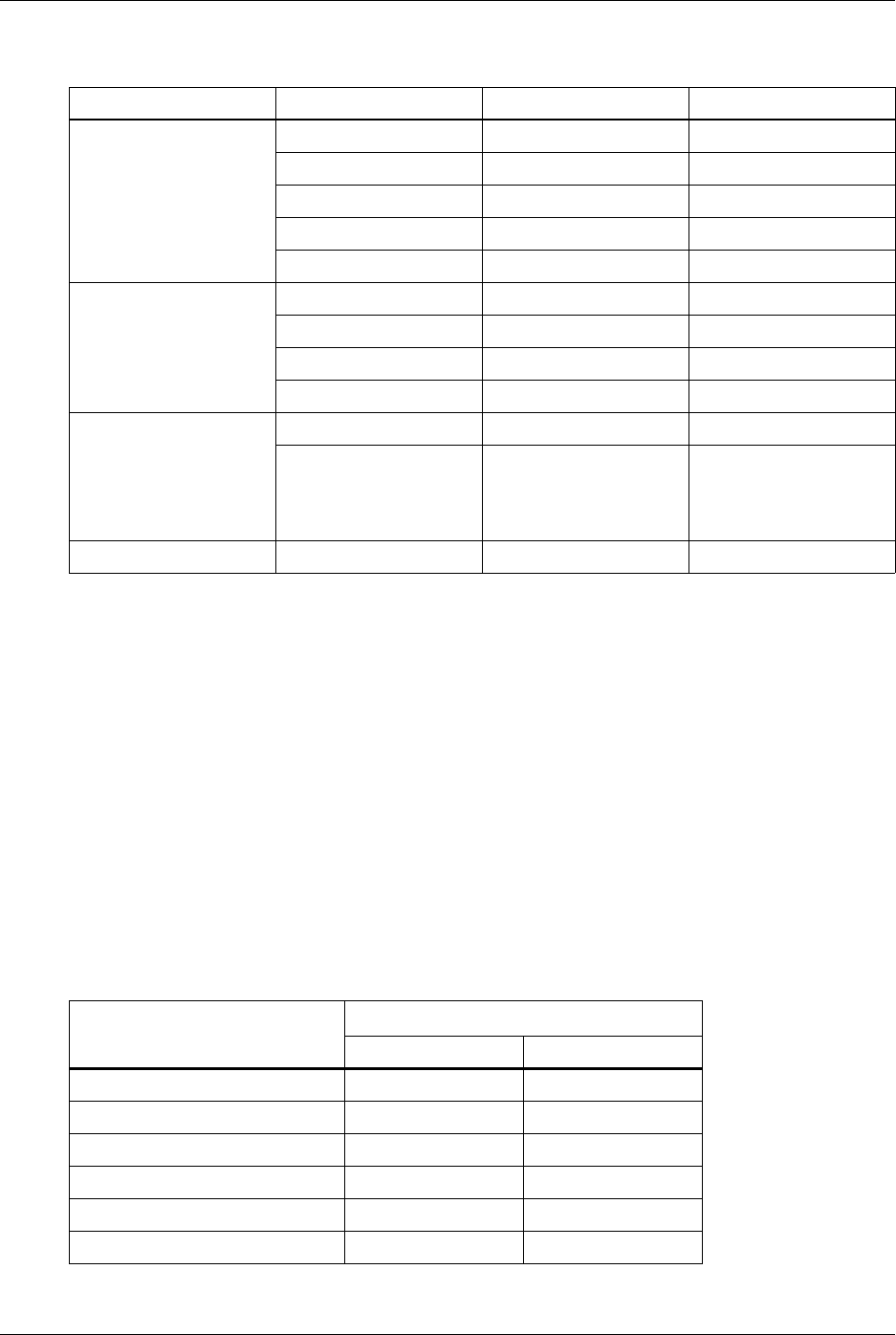
80-VK890-3 Rev. A 7
MAY CONTAIN U.S. AND INTERNATIONAL EXPORT CONTROLLED INFORMATION
Gobi2000 User Guide Introduction
Key connectivity support includes:
USB 2.0 high-speed
Universal integrated circuit card (UICC) for RUIM/USIM
Primary and secondary antenna connectors
Status LED driver output
DC power supply input and enable/disable control
1.3 Gobi2000 operating modes
Example Gobi2000 platform operating modes and their expected data throughput rates are
summarized in Table 1-3. Operating modes are set by the host computer via the USB interface.
Table 1-2 Gobi2000 supported frequency range
Mode Band UL frequency (MHz) DL frequency (MHz)
WCDMA Release 99
HSDPA Release 5
HSUPA Release 6
1 1920-1980 2110-2170
2 1850-1910 1930-1990
5 824-849 869-894
6 830-840 875-885
8 880-915 925-960
GSM
GPRS
EGPRS
850 824-849 869-894
900 880-915 925-960
1800 1710-1785 1805-1875
1900 1850-1910 1930-1990
CDMA2000 1X
CDMA2000 1xEV-DO
Rev. 0
Rev. A
BC0 824-849 869-894
BC1 1850-1910 1930-1990
GPS position location GPS L1 - 1574.42 - 1576.42
Table 1-3 Gobi2000 operating modes and throughput rates1
Operating mode Data throughput rate2
Forward link Reverse link
CDMA 1x RTT 153 kbps 153 kbps
CDMA 1x EV-DO 3.1 Mbps 1.8 Mbps
WCDMA R99 384 kbps 384 kbps
WCDMA - HSDPA 7.2 Mbps ---
WCDMA - HSUPA --- 5.76 Mbps
GSM 14.4 kbps 14.4 kbps
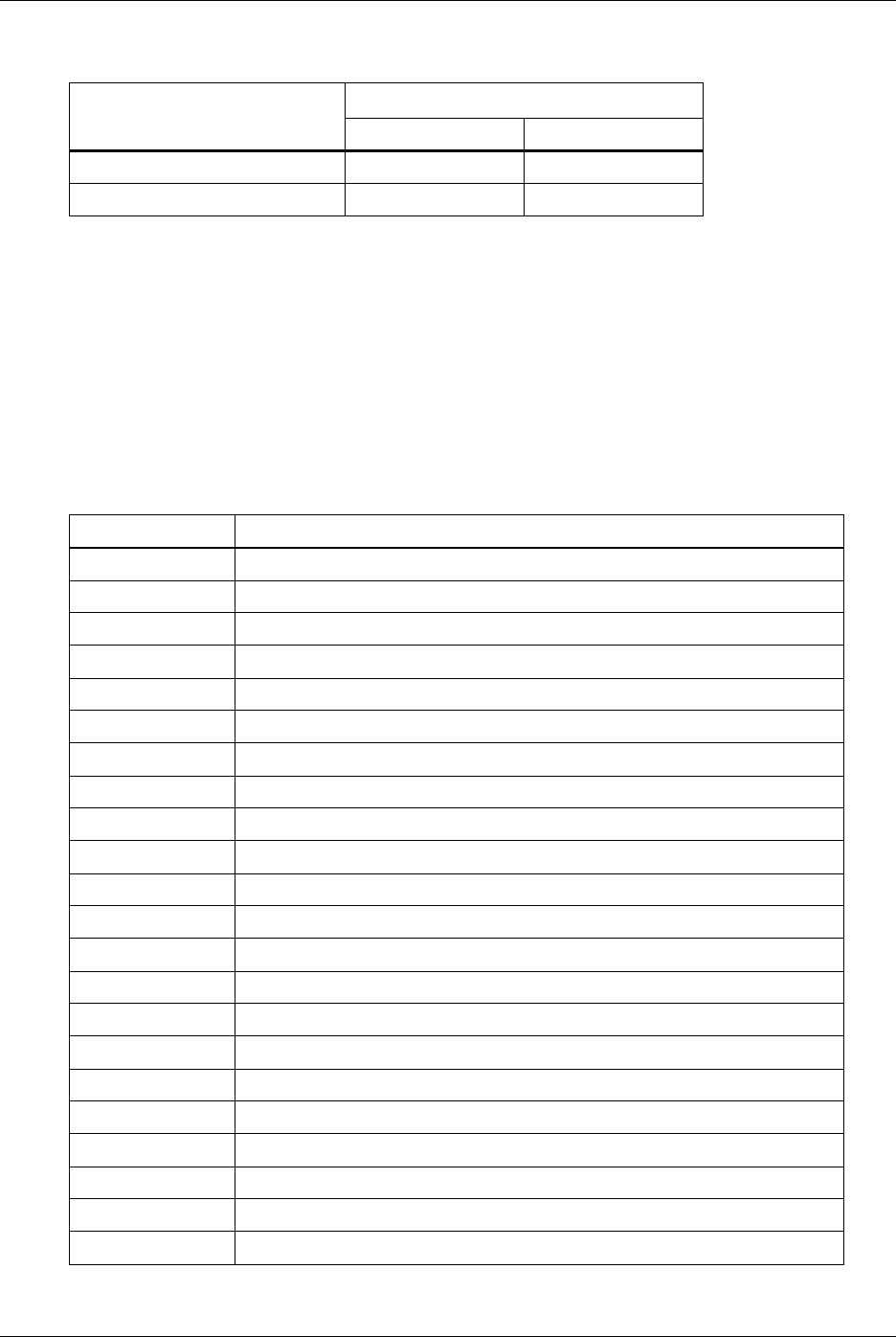
80-VK890-3 Rev. A 8
MAY CONTAIN U.S. AND INTERNATIONAL EXPORT CONTROLLED INFORMATION
Gobi2000 User Guide Introduction
1.4 Terms and acronyms
Table 1-4 defines the terms and acronyms used throughout this document.
GPRS 85.6 kbps 42.8 kbps
EDGE 236.8 kbps 118.4 kbps
1. GPS position location can be enabled simultaneously with any airlink operating
mode, or Rx diversity can be enabled during any CDMA or WCDMA operating
mode.
2. Target peak data rates are listed; actual throughput performance varies
depending on operating and RF environment conditions.
Table 1-3 Gobi2000 operating modes and throughput rates1 (cont.)
Operating mode Data throughput rate2
Forward link Reverse link
Table 1-4 Terms and acronyms
Term Definition
AMSS Advanced Mobile Subscriber Software
CAPI Computer application programmable interface
CDMA Code Division Multiple Access
CE Mandatory conformity marking on many European products
Cell Cellular band
CTIA Cellular Telecommunications and Internet Association
DCS Digital cellular system at 1800 MHz
DDR SDRAM Dual data rate synchronous dynamic random access memory
EDGE Enhanced Data Rate for GSM Evolution
EMC Electromagnetic compatibility
ESD Electrostatic discharge
FCC Federal Communications Commission
GPRS General packet radio service
GPS Global positioning system
GSM Global System for Mobile communications
HSDPA High speed downlink packet access
HSUPA High speed uplink packet access
IMT International mobile telecommunications
ISOD Interface specification and operational description
JTAG Joint Test Action Group
MDM Mobile Data Modem
PA Power amplifier
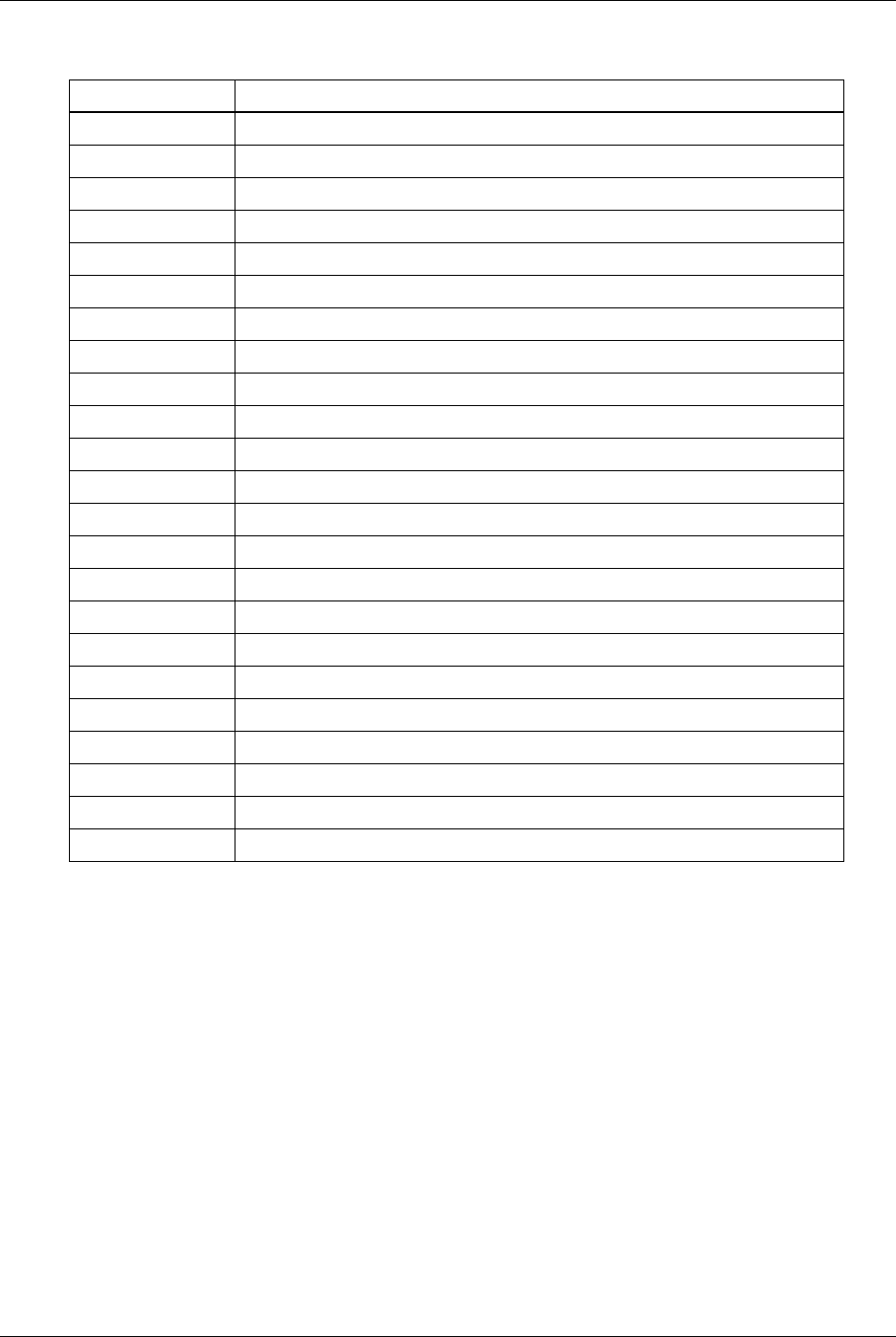
80-VK890-3 Rev. A 9
MAY CONTAIN U.S. AND INTERNATIONAL EXPORT CONTROLLED INFORMATION
Gobi2000 User Guide Introduction
PCI Peripheral component interconnect
PCS Personal communication system
PHY Physical layer (USB transceiver)
PM, PMIC Power management, power management integrated circuit
QDL Qualcomm Down Loader
RFR Radio frequency receiver
RoHS Restriction of hazardous substances
RTR Radio frequency transceiver
RUIM Removable user identity module
TIA/EIA Telecommunication Industry Association/Electronic Industries Alliance
TS Technical specification
TXCO Temperature-compensated crystal oscillator
UICC Universal integrated circuit card
ULPI USB transceiver macrocell interface + low pin interface
UMTS Universal Mobile Telecommunications System
Gobi2000 Gobi2000 refers to a particular Qualcomm product
USB Universal serial bus
USIM Universal subscriber identity module
VCTCXO Voltage controlled temperature-compensated crystal oscillator
WCDMA Wideband Code Division Multiple Access
WLAN Wireless local area network
WHQL Windows® Hardware Quality Labs
WWAN Wireless wide area network
Table 1-4 Terms and acronyms (cont.)
Term Definition

80-VK890-3 Rev. A 10
MAY CONTAIN U.S. AND INTERNATIONAL EXPORT CONTROLLED INFORMATION
2Standards and Regulatory Compliance
2.1 Standards and certification
The Gobi2000 platform conforms to the following standards and certification requirements:
CDMA
TIA/EIA IS-98E (CDMA2000 1X)
TIA/EIA IS-866 (1x EV-DO)
UMTS (WCDMA)
TS 25.101
GSM
TS 45.005
FCC
47 CFR Part 1 – RF radiation exposure limits
47 CFR Part 2 – Equipment authorization
47 CFR Part 15 – Unintentional radiators
47 CFR Part 22 – Cellular
47 CFR Part 24 – PCS
CE
EMC protection requirements
– EN 301 489-1 – Common technical requirements
– EN 301 489-7 – GSM and DCS
– EN 301 489-24 – WCDMA 2100
Effective use of spectrum to avoid unwanted interference requirements
– EN 301 908-1 – General requirements
– EN 301 908-2 – WCDMA 900/2100
– EN 301 511 – GSM900/GSM1800
– EN 301 607-1 – GSM900/GSM1800
CTIA/GCF/PTCRB
Safety

80-VK890-3 Rev. A 11
MAY CONTAIN U.S. AND INTERNATIONAL EXPORT CONTROLLED INFORMATION
Gobi2000 User Guide Standards and Regulatory Compliance
EN 50360/61 full carrier certification (carriers TBD)
Microsoft® WHQL certification
RoHS compliance
2.2 Regulatory information
2.2.1 Safety warnings
Do not operate the Gobi2000 platform in the following environments:
In active blasting areas
In potentially explosive environments such as refuelling points, fuel depots, or chemical plants
Near medical equipment, especially life support equipment that might be susceptible to radio
interference
In an aircraft as follows:
Gobi2000 transmissions could interfere with aircraft electrical and communication
systems. Like cell phones, using the Gobi2000 platform in an aircraft is illegal in some
jurisdictions.
If cell phone usage is permitted while the aircraft is on the ground, normal Gobi2000
operation is also permitted.
2.2.2 North American compliance
The Gobi2000 platform has been authorized for mobile operation in North America. The initial
authorization grant does not permit end-user installation.
A permissive change will be submitted to add end-user installation and/or portable usage
conditions. The permissive change application includes detailed information on Gobi2000’s
two-way authentication procedure, preventing use of the module in unauthorized notebooks.
For mobile applications, the following conditions must be met:
1. Maintain at least a 20 cm separation between the antenna and the user’s body.
2. Radiated transmit power must be equal to or lower than that specified in the FCC Grant of
Equipment Authorization for FCC ID: J9CGOBI2000.
3. To comply with FCC/IC regulations limiting both maximum RF output power and human
exposure to RF radiation, maximum antenna gain (including cable loss) must not exceed:
Cellular band < 7.5 dBi
PCS band < 3.5 dBi
4. Independent Gobi2000 operation — the Gobi2000 platform must not be colocated or jointly
operated with any other transmitter or antenna within the host device.

80-VK890-3 Rev. A 12
MAY CONTAIN U.S. AND INTERNATIONAL EXPORT CONTROLLED INFORMATION
Gobi2000 User Guide Standards and Regulatory Compliance
5. Installation of the Gobi2000 module into a host device can only be completed by authorized
personnel unless the FCC certification addresses FCC host/module authentication
requirements.
6. A label with the following statements must be attached to the host end product:
This device contains Tx FCC ID: J9CGOBI2000
This equipment contains equipment certified under IC: 2723A-GOBI2000
Other regional required regulatory markings
7. The host end product must include a user manual that clearly defines operating requirements
and conditions that must be observed to ensure compliance with current FCC/IC RF exposure
guidelines.
8. The host end product must also pass the FCC Part 15 unintentional emission testing
requirement and be properly authorized per FCC Part 15.
For portable devices, in addition to conditions 3 through 6 described above, a separate approval is
required to satisfy the SAR requirements of FCC Part 2.1093 and IC RSS-102.